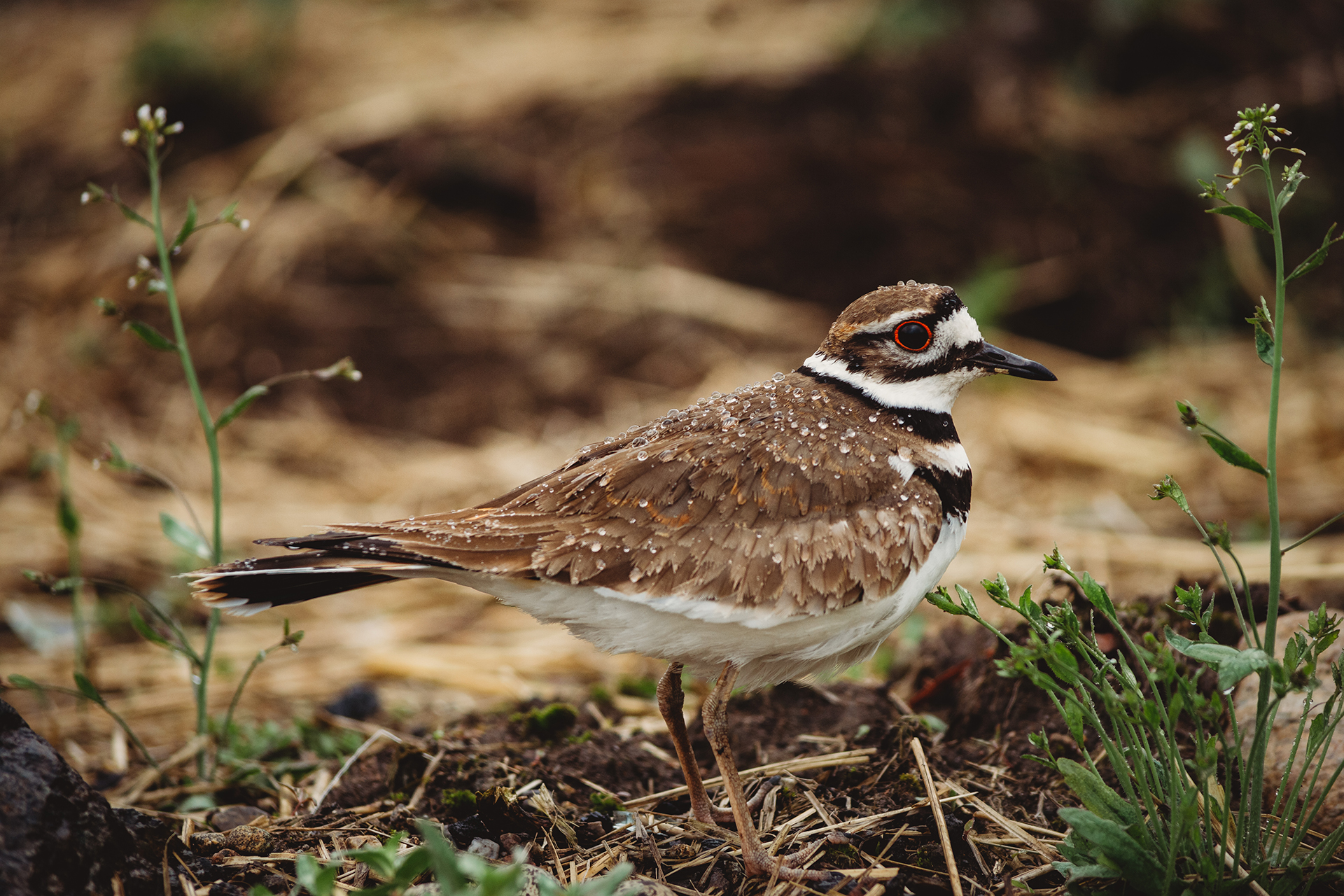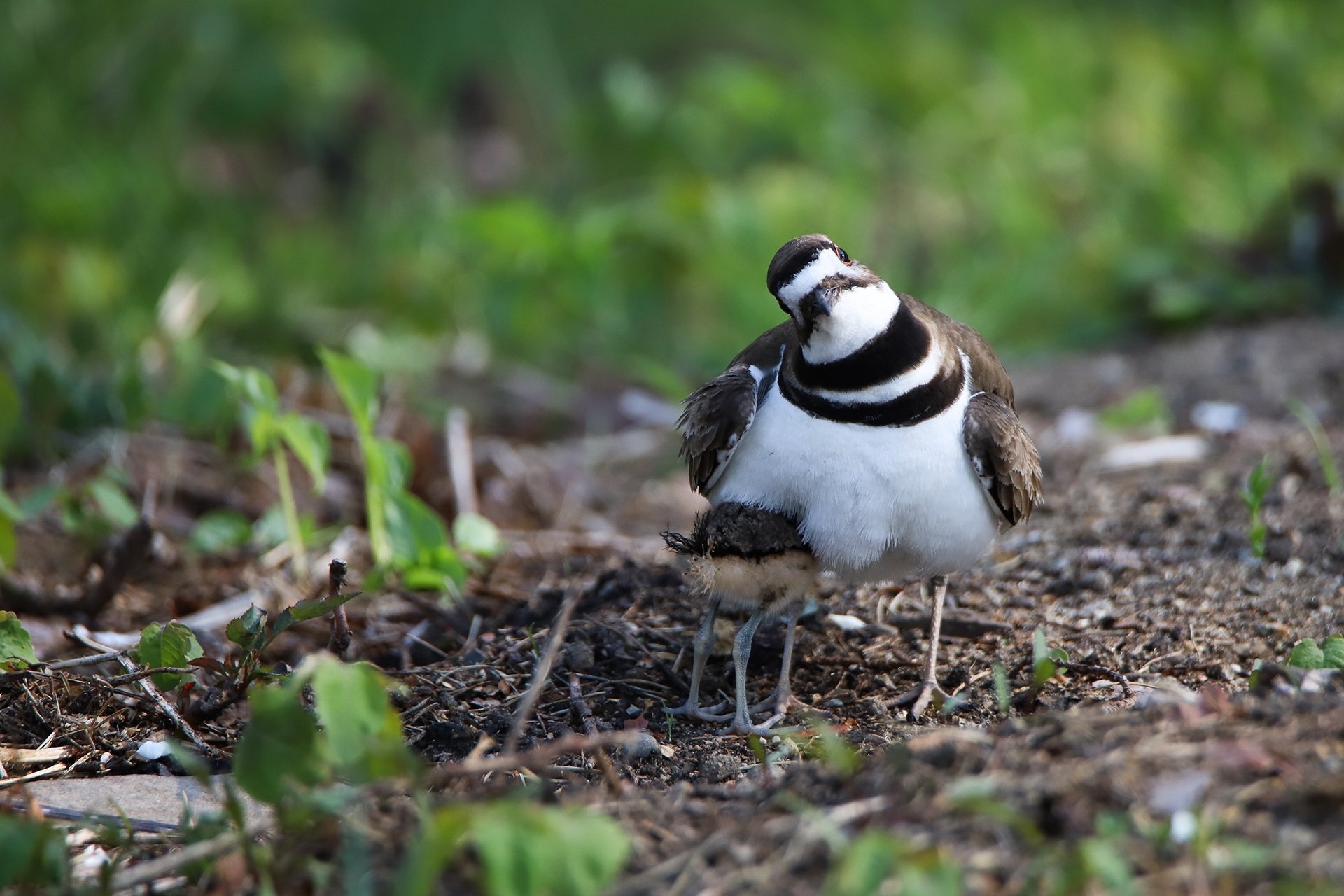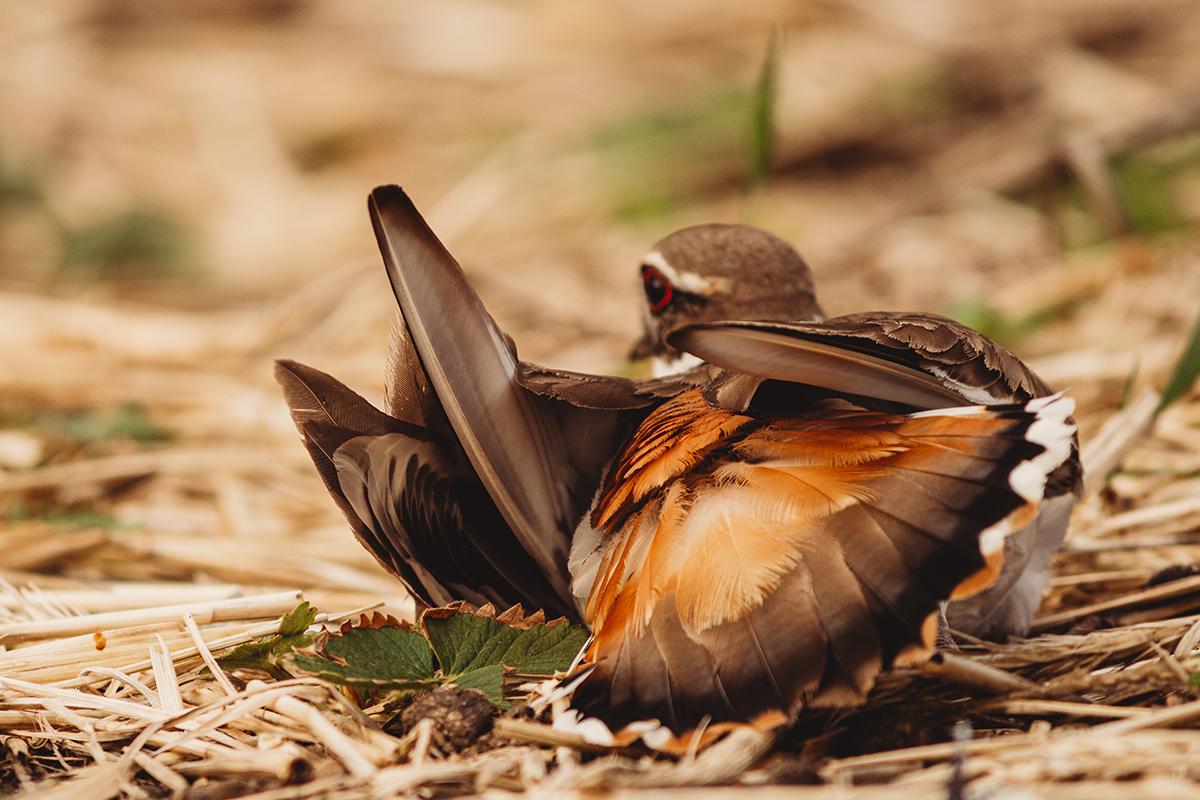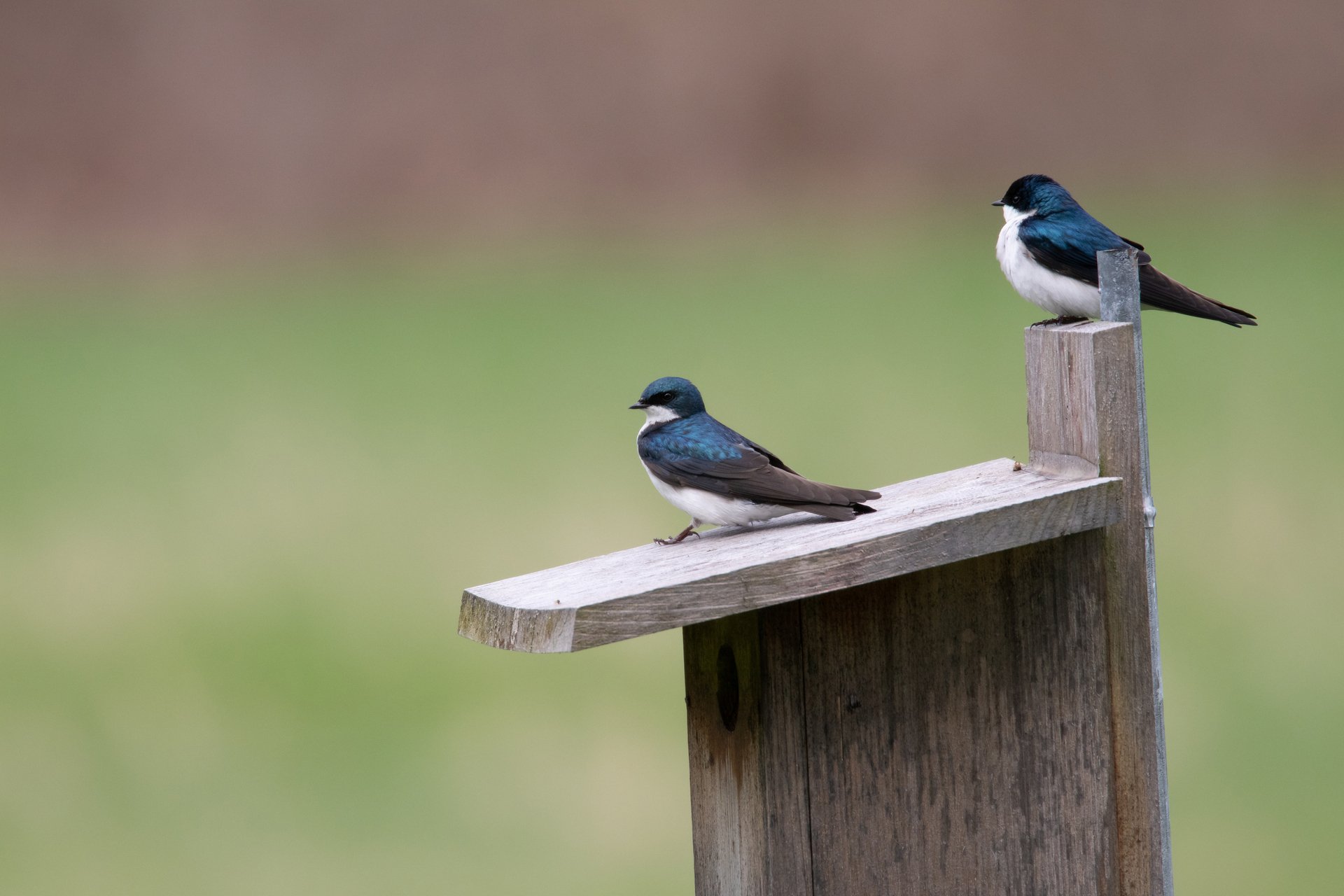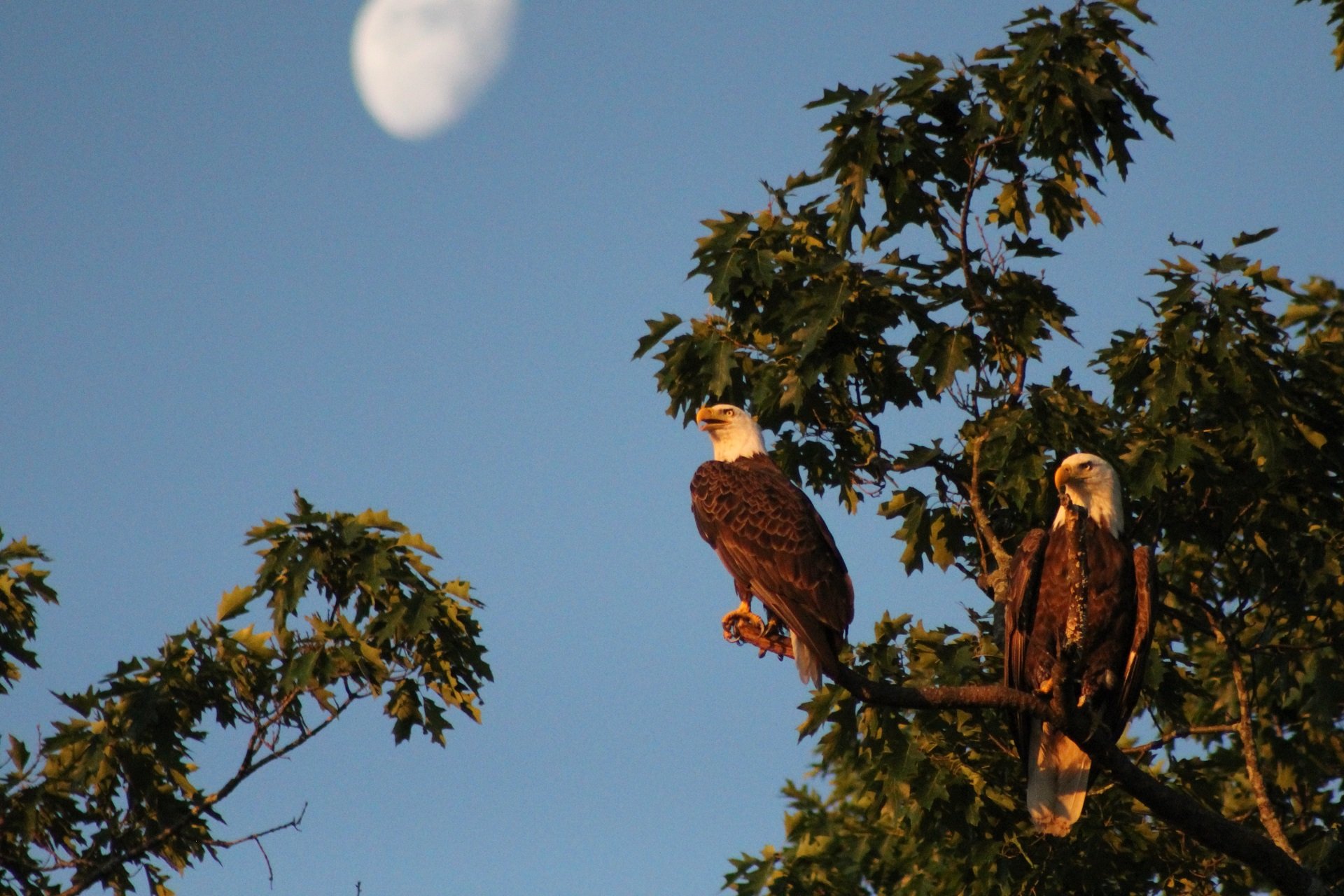Birds in Massachusetts
Killdeer
Larger, louder, and more numerous by far than its cousin the Piping Plover, the Killdeer (Charadrius vociferus) gets its name from the insistent cries that can be heard over fields, parking lots, gravel pits, and a host of other open spaces throughout spring and summer.
How to Identify Killdeer
Roughly the size of a robin, the Killdeer is much larger than Piping Plover, and has a dark brown back and white belly, with two black rings around the neck. When agitated or in flight it exposes its rufous-red rump.
You will often see Killdeer running across a field or parking lot, stopping at short intervals and making a loud calling noise.
Life Cycle
Killdeer are among the earliest spring migrants to arrive in our area, usually arriving early to mid-March.
By mid-April, Killdeer are present in a variety of open areas, where they will establish territories for nesting. These include fields, pastures, airports, golf courses, playgrounds, gravel pits, beach dunes, unpaved driveways, and even graveled rooftops.
Killdeer usually lay four eggs in a nest scrape lined with pebbles or grass. Both sexes take an equal share in the 25-day incubation period. Once the eggs hatch, the young are fully covered in down and almost immediately can move about and feed themselves.
Behavior
When a potential predator draws too close to the nest or young, the parent begins a classic distraction display, which includes flopping along the ground with its wings dragging as though injured and constantly flashing its brightly marked tail.
Where Can I See Killdeer
In late summer, small groups of Killdeer are found in open areas near the breeding sites. In late September or early October larger flocks occur in the interior river valleys and the southeastern portion of the state. By mid-November, most individuals have departed for wintering grounds in the southern United States. A few linger or attempt to overwinter at coastal locations.
How Mass Audubon is Supporting Birds in Massachusetts
Mass Audubon works at our wildlife sanctuaries and beyond to ensure that the nature of Massachusetts continues to thrive. By scientifically monitoring Massachusetts birdlife, Mass Audubon informs important conservation decisions and launches targeted initiatives to help at-risk species.
In addition, fostering healthy habitats, supporting native species, and educating people about the importance of nature conservation is critical to our success. Learn more about our work
How You Can Support Birds in Massachusetts
Mass Audubon supports birds like the American Goldfinch every day, but we couldn’t do it without the support of our 160,000+ members.
Help us support the American Goldfinch, and birds like them, by becoming a member today.
Upcoming Birding Programs
See AllDestination Birding With a Scone: Burrage Pond Wildlife Management Area
-
Burrage Pond Wildlife Management Area, Hanson
-
Tuesday, December 2
8:00-11:00am
Adults
Bird Walk at Brewster's Woods
-
Brewster's Woods Wildlife Sanctuary, Concord
-
Tuesday, December 2
8:30-10:30am
Adults
Wednesday Morning Birding
-
Newburyport and vicinity
-
Wednesday, December 3
9:30am-12:30pm
Adults
Stay Connected
Don't miss a beat on all the ways you can get outdoors, celebrate nature, and get involved.




